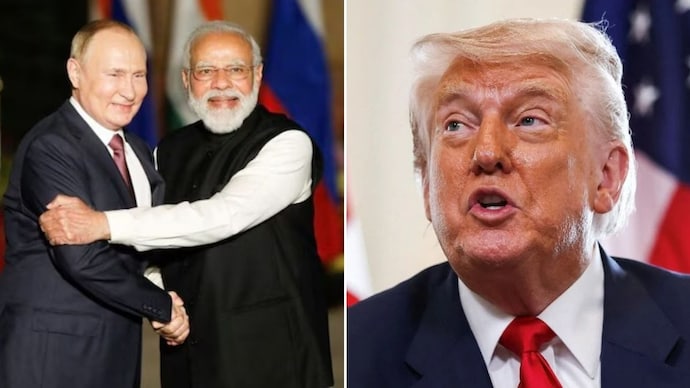As geopolitical tensions escalate over the ongoing war in Ukraine, Indian Prime Minister Narendra Modi has firmly resisted growing pressure from U.S. President Donald Trump to curtail India’s purchases of Russian oil. Despite Washington’s renewed threats of trade penalties and secondary sanctions, New Delhi has made it clear that its energy security and national interest will not be dictated by external actors.
In a recent series of statements, President Trump criticized India for maintaining high volumes of Russian crude oil imports—putting it on par with China in terms of financial support for Moscow. Trump’s administration has accused India of “bankrolling Russia’s war machine,” and introduced a new 25% tariff on Indian exports to the U.S. as a warning shot.
Top Trump aide Stephen Miller further signaled that diplomatic and financial consequences may follow if India continues to deepen its economic ties with Russia. The administration is reportedly considering secondary sanctions aimed at nations doing business with Russia’s energy and defense sectors.
“You can’t say you stand for peace while writing checks to Putin,” Miller said in a televised interview.
India’s Firm Response
India, which imports nearly 88% of its crude oil, has found an economic lifeline in discounted Russian oil since 2022. In response to the U.S. pressure campaign, Indian government sources stated unequivocally that no change in policy is being considered.
A senior official from the Ministry of External Affairs reaffirmed India’s stance: “Our energy needs are guided by economic logic and strategic autonomy. We reject the imposition of foreign viewpoints on our sovereign decisions.”
State-owned oil companies, including Indian Oil Corporation (IOC) and Bharat Petroleum, continue to buy Russian crude based on cost-benefit considerations.
Prime Minister Modi has taken a defiant public stance, using the controversy to bolster his domestic messaging around self-reliance and the Make in India initiative. In a televised address, he urged Indians to “stand by Indian interests” and to not yield to international coercion.
“We will not compromise India’s development or its dignity,” Modi declared at a recent economic summit in Mumbai.
He has also instructed Indian diplomats to push back diplomatically against what New Delhi sees as an unfair attempt to restrict its energy options amid volatile global markets.
Russia’s Unwavering Support
Russian officials have strongly condemned Washington’s pressure tactics: Russia’s Foreign Minister Sergey Lavrov called U.S. demands that India cease unloading Russian oil “completely unjustified,” praising India as a power that chooses its own partners and sets its own policies.
Spokesperson Maria Zakharova labeled U.S. attempts to restrict India’s energy cooperation as “inappropriate and counter‑productive,” stressing that India has not joined Western sanctions and that Russia rejects any unilateral coercion in the energy domain
Russian Deputy Energy Minister Pavel Sorokin argued that U.S. sanctions should not impede oil sales to India, dismissing them as illegal and harmful to the global economy. He maintained that energy commerce should remain pragmatic and decoupled from geopolitics.
Russia and India have a long and deep partnership and this attempt by the US to cut them off from each other is quite unrealistic. India is aproud nation that maintains its sovergnity it will not allow a foreign nation to dictate its policies especially over issues that directly affect its citizens.
Economic Risks and Trade Fallout
Analysts warn that cutting off Russian oil would come at a steep price. Russian crude, often priced at a discount of $8–$12 per barrel compared to Brent, has saved India an estimated $9–11 billion over the past 18 months.
Should the U.S. escalate tariffs or impose broader sanctions, India’s export-dependent sectors—including textiles, pharmaceuticals, and IT services—could come under purview, however if this happens it would considerably drive up the prices in the US market for the american citizens. Meanwhile Indian officials argue that the country is diversifying its trade and building stronger economic ties with Southeast Asia, the Middle East, and Africa to reduce reliance on the West.
OPEC+ has agreed to increase production by 548,000 barrels per day starting in September 2025. This could ease some of the upward pressure on prices, though market volatility remains high amid persistent conflict in Eastern Europe.
The Trump administration’s campaign is part of a broader strategy to squeeze Moscow economically by targeting countries that maintain strong commercial links with Russia. However, both India and China have shown little inclination to alter course, the moves may even backfire driving the RIC Russia India China bloc even closer and giving power to BRICS. This will alao alarm other nations of the extreme moves the US may take attempting to go past their sovergnity and assert its own geopolitics on them. This move against India may even end up damaging the US rather than achieving its goals of decoupling India from Russia, inadvertently driving them even closer.
